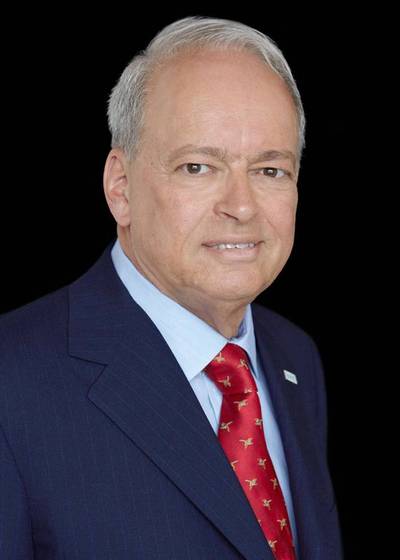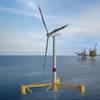Clay Maitland Delivers Keynote Address in Stamford, CT
SHIPPINGInsight Fleet Optimization Conference kicks off as Maitland weighs in on how best to profitably operate a ship. He says, "It's all about the Choices."
Here we are, early in the morning, before the coffee has kicked in, and I am tasked with a “keynote speech”. You, in turn, have the job of being suitably inspired by my words of wisdom. So, here is my theme, for the next two days: we are out to define how to profitably operate a ship. The system, and how to select it, are a big part of the decision.
The late Peter Drucker was a famous management guru, who exercised a powerful influence during much of the 20th century. In quoting him, I am taking several risks: one is that, like most keynoters, I have to pretend that I can foretell the future. Yogi Berra said that “it’s dangerous to make predictions, especially about the future”. With all due respect to Yogi, if we look at the current economy, whether or not the present situation turns out to be the “new normal”; and, examining environmental rules and regulations; where the energy supply is likely to come from, including fuel choices and prices; and, finally, if we study the technology, we can make some very educated predictions as to how ships will be run at a reasonable profit, in the coming years.
My point of view comes from working for a flag state for many years, as well as being Chairman of the North American Marine Environment Protection Association for about five. To my mind, fleet optimization in these hard times is really about choices: designs, management, construction, and technology. It is also about training and skills.
We need to take into account that the cost of bunkers is not the only thing that is becoming more expensive; a properly trained crew is increasingly important. The quality of labor is growing in importance!
I do agree with Peter Drucker’s point: the “new normal” will require new logic. Specifically, our sector will require a very different approach to engineering and design.
Consider the following: between the years 2000 and 2012, bunkers have increased their share of total operating costs by a factor of four. Heavy fuel oil (good old bunker C), some 12 years ago, cost about $170 per ton. Today, the same stuff costs almost $720 per ton.
There are at present about 5,000 containerships in operation, at least theoretically, around the world, most of the operated by major players. If we examine slot costs for a mega-boxship sailing between Shanghai and Rotterdam, modern ship with the latest engineering can save almost $1 million per trip, which means that the same ship will require a 22% less load factor, to make a return on investment, as against a containership built five years ago.
This stems from the fuel efficiency of modern designs, and, to a degree, the lower prices now on offer at Chinese shipyards and suppliers.
The problem is that the older ships either are now or will be offered for sale on the secondhand market. They will not necessarily disappear, despite all the hopeful talk we hear of scrapping!
Accordingly, here is our mission, at this conference: to identify the strategies that will succeed. And, most important, the means by which we can adapt to change.
I would suggest, as a keynote theme, first that it is all about the “system”, because ship performance is about overall design.
- Proper systems engineering is essential to getting the most out of a ship during its working lifetime;
- Situational awareness: in other words, what’s going on in the outside world. Without that knowledge, all other decisions become overwhelming.
We have to ask the right questions, such as:
The cost of regulation, notably air emissions and ballast water;
So-called “end of life” issues. Does an owner “pull the trigger” at fifteen years? Is this influenced by how much it spends on a third special survey?
Will the use of marine distillates prevail over LNG? Which fuel is right for my ship?
Will the use of scrubber technology grow, and if so, when?
Will the availability, and therefore use, of shale gas throughout the world have an impact on fuel economy?
Among the issues that we will explore are:
- Ballast Water Treatment, and the Impact of U.S., California, and IMO Guidelines;
- Energy Management Systems and Energy Efficiency Regulation;
- Tanker Technical Fuel Efficiency and Hull / Propeller Performance;
- Slow Steaming Technologies;
- Propulsion of Modern Tankers with Low Speed, High Stroke 2 Stroke Engines, Fuel Consumption, and EEDI; the Energy Efficiency Design Index;
- Alternative Fuels.
- External factors, such as the “new” Panama Canal.
Here are some answers, to match with the questions above:
- For example, competitive advantage for your fleet means hull performance.
- Hull performance, in turn, requires that condition of the hull is critical.
- Your vessel’s energy efficiency is of paramount importance.
- That, however, means that the ship’s overall energy efficiency must be measurable. Measurement and analysis of a hull and engine performance are disciplines that are still in the “early days” of development.
- The type, trade and use of a vessel will of course vary the standards to be employed in quantifying vessel efficiency, including energy consumption.
- Risk management: Like it or not, fleet optimization is all about the bottom line. If your bottom line drowns in red ink because of an oil spill, like COSCO BUSAN, or a disastrous grounding like the RENA on the New Zealand Coast, all the favorable metrics, algorithms and key performance indicators, earthlings, won’t save you. In hard times, there is a temptation to cut corners on quality, safety and risk management.
At a time when the cost of fuel has soared to something in the area of 35% of total operating costs, a properly designed newbuilding will give the operator a great advantage. Such newbuildings are generally about 30% below the International Maritime Organization (IMO)’s Energy Efficiency Design Index (EEDI) benchmark.
Regulations now will force new ships to reach a 10% improvement in efficiency by 2015, followed by a further 20% in energy efficiency by 2020, and another 30% by 2025.
This means that there are big opportunities to reap much better returns on vessel operations in the years to come, compared to existing, lower-performance, tonnage. That’s the good news.
Now, the bad news: the new tonnage, or “eco-ships” that we are talking about is likely to add additional capacity to the existing vessel inventory, and could well extend the “oversupply overhang” beyond – and maybe well beyond – this decade.
One observer, associated with a major classification society (Dr. Albrecht Grell, of Germanischer Lloyd) feels that the equivalent of 20% of the container fleet now on order still remains to be delivered; slow steaming, in use at the present time, could give way to “speeding up”, which would in effect add some 10% capacity all by itself.
In much the same way as we can believe in UFOs or Bigfoot, there are many opinions about whether the technology will really work. What we do know is that daily fuel costs are now running considerably higher than charter rates. We also know that the world fleet is growing, as a whole, by more than 7%. This concentrates our thoughts, as was once said about the presence of danger. I am confident that, in the words of the song, “we can work it out”.















